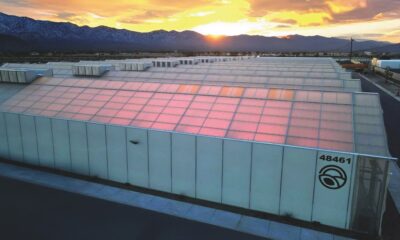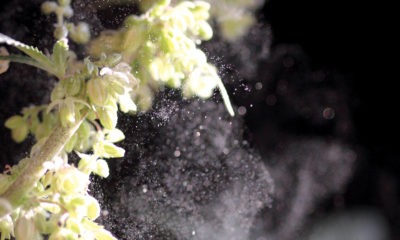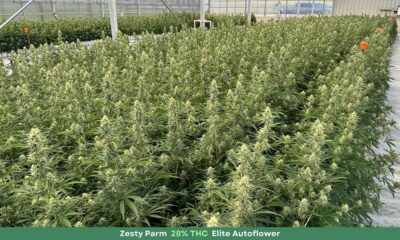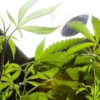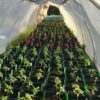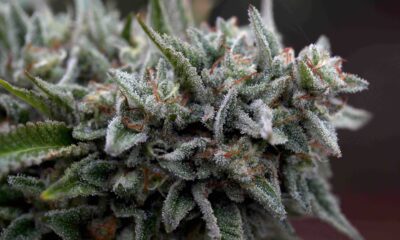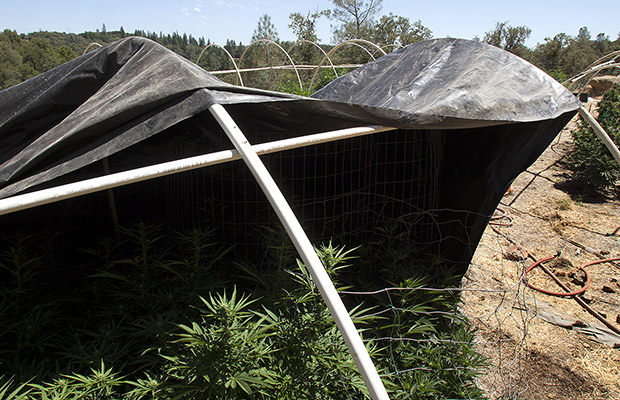
Cultivation
What’s the Deal With All This Light Dep Cannabis?
Light deprivation isn’t a new cultivation technique, but there’s been a pronounced spike in its use by NorCal growers over the past year, leading to a flood of “light dep” bud on the market.
If you’ve been buying cannabis recently — particularly on the Pacific Coast and especially in California — you’ve probably seen at least a few offerings of “light dep” cannabis. It isn’t your imagination, there’s a lot of it going around, but what exactly is it?
In theory, light deprivation isn’t much different from the approach taken by indoor growers who use regimented light and dark periods to “trick” plants into flowering. In practice, light deprivation means the additional effort of “pulling tarps” over a greenhouse and scheduling on and off cycles for supplemental lighting.
But advocates of the technique point to boosted quality and yields as well as energy savings and reduced environmental impacts versus indoor cultivation, with added control over conditions not enjoyed by traditional outdoor growers.
From The Ganjier:
Compared to growing indoors, [light dep] has a much smaller environmental impact and drastically reduces the monthly overhead. Compared to growing outdoors, it affords the grower more control over changing weather patterns, provides privacy and allows for fresh product when plants under full sun are still in their vegetative stage or in early flowering…. When used in conjunction with supplemental heat and lighting, a greenhouse with a light dep system allows a farmer to be forever flowering with minimal inputs year round.
As a purchaser for the San Francisco medical dispensary chain Harvest, Neil Dellacava sees literal tons of cannabis each year. He told Cannabis Now that there’s been a definite uptick in the percentage of light dep packs landing on his desk in 2017.
“Deps have really taken off over the past year — I mean people have been doing deps for years, but I would say supplemental greenhouse growing is becoming more of a thing,” he said. “People think they can make it more dank with supplemental lighting and have more harvests per year.”
But Dellacava also said that the end product simply isn’t as desirable or valuable as the same strain grown indoors. He pointed to a variety of factors, from coloration to bud structure, that make it easy for purchasers like him to spot dep bud, which doesn’t fetch the same wholesale price as indoor.
“I haven’t seen anything that blows me out of the water,” he said. “It goes from like $1,600 to $2,000 per pound, cause people can produce more cheaper.”
But that lower wholesale cost ultimately translates into a cheaper retail price for consumers, who aren’t always as discerning as connoisseurs or professionals selecting inventory for dispensaries. Sometimes people just want cheap, tasty, effective cannabis, and light dep offers that.
When Cannabis Now gave away light dep Goji OG at last year’s Emerald Cup, nobody on the receiving end complained… okay, one guy said something, but it was that guy.
Is light dep a replacement for indoor? Of course not. But it’s a viable technique, which many cultivators are running with and, ostensibly/hopefully, some are refining and improving upon.
Because Dellacava and other industry observers have said that as the legal market expands, the biggest explosion of growth will be in the “mids” sector of bulk-produced commercial quality cannabis, leaving boutique growers to compete over a smaller “luxury” segment of the market.
Mids are mids and fire is fire, but if light dep means better bud in bigger bulk at a reduced cost to growers, it should ultimately mean a higher baseline for commercial quality moving forward into the dawning era of adult use legalization.
TELL US, have you tried light dep cannabis? What do you think?



